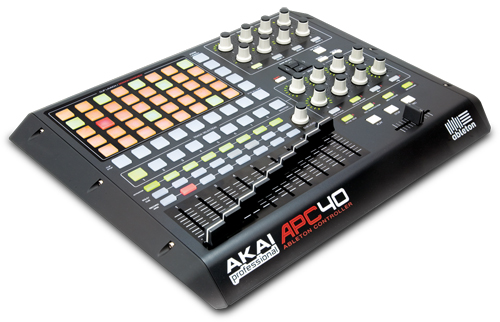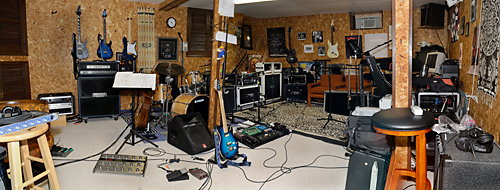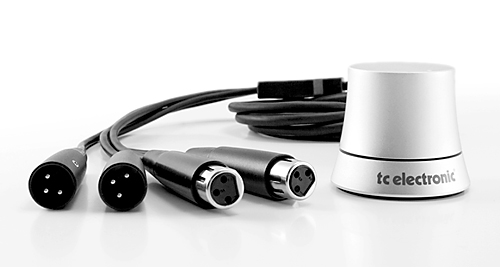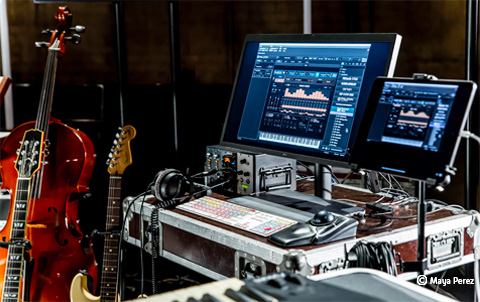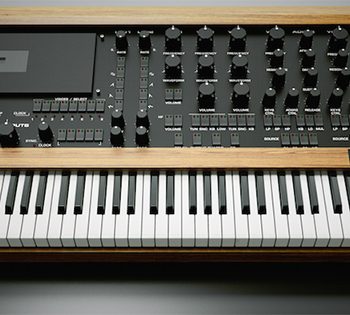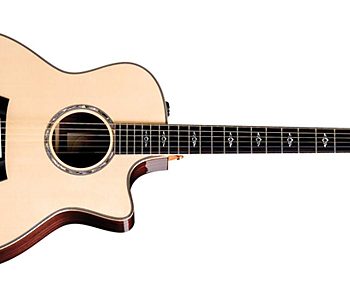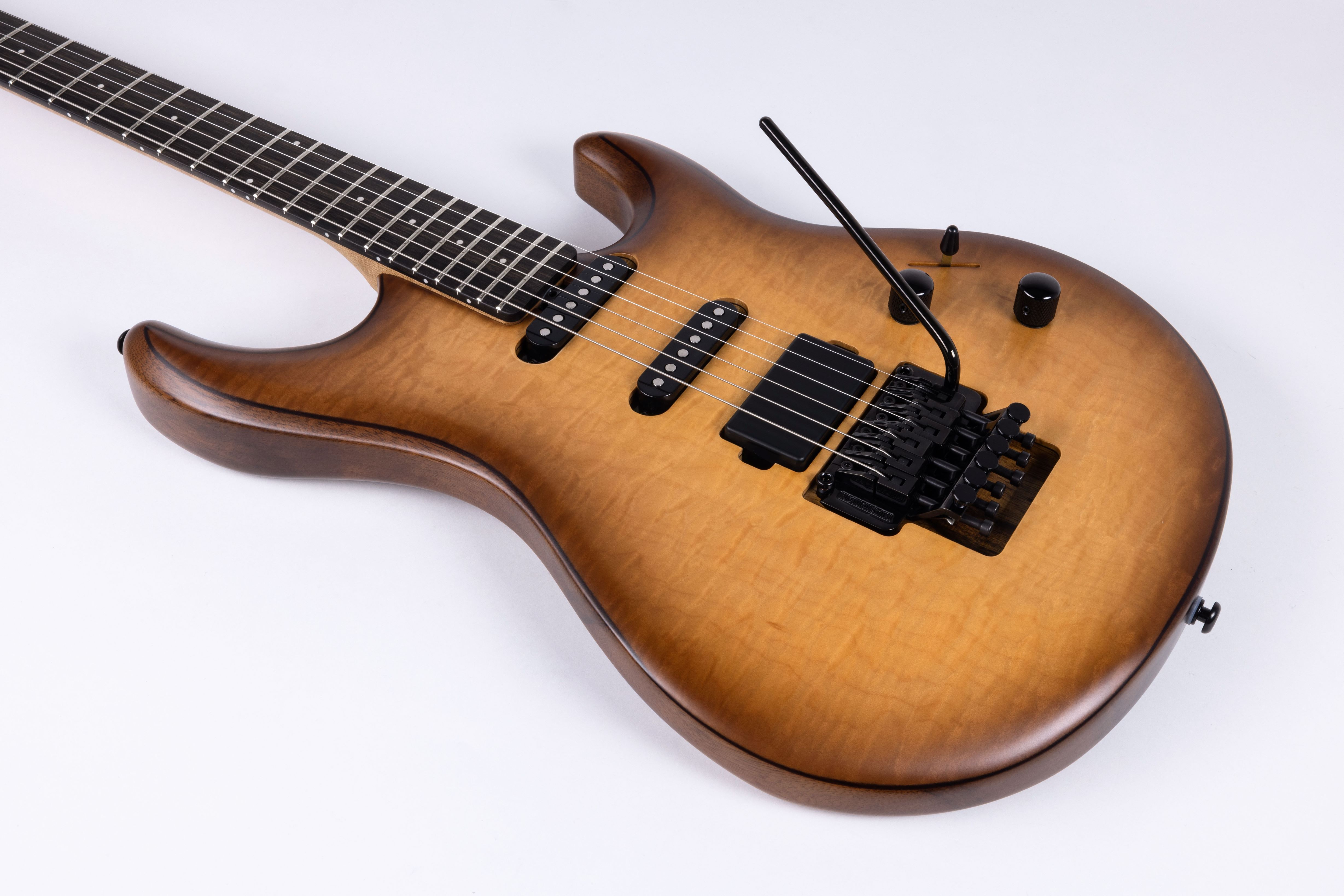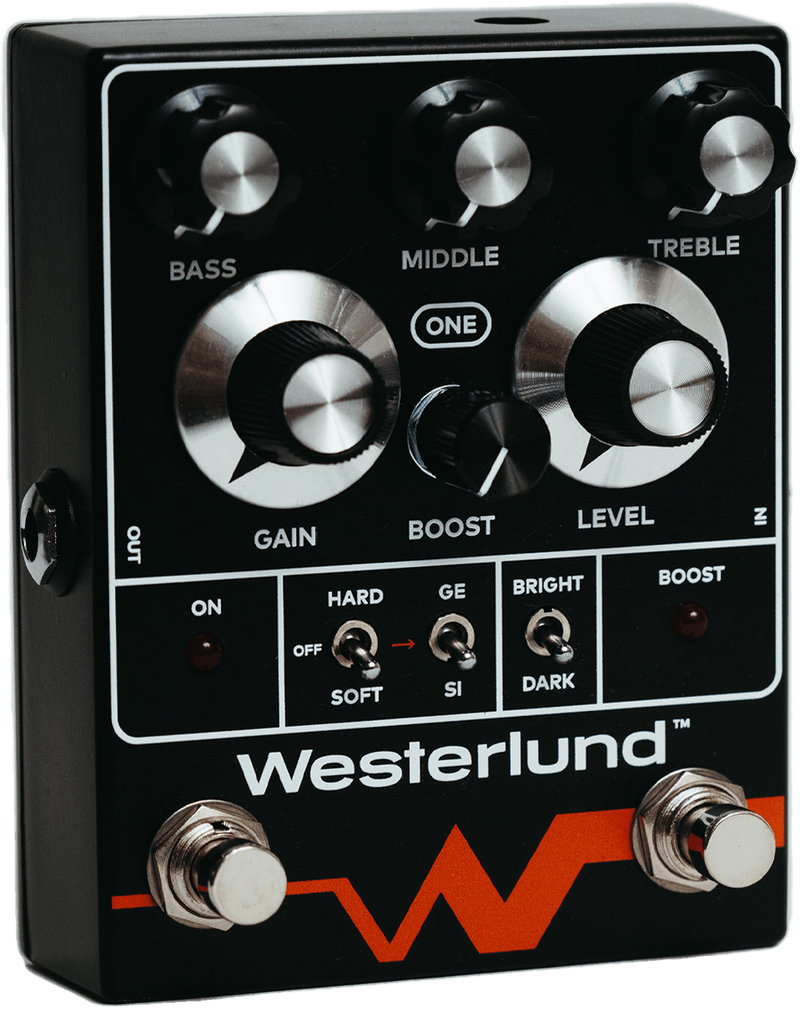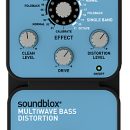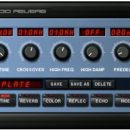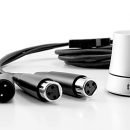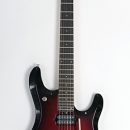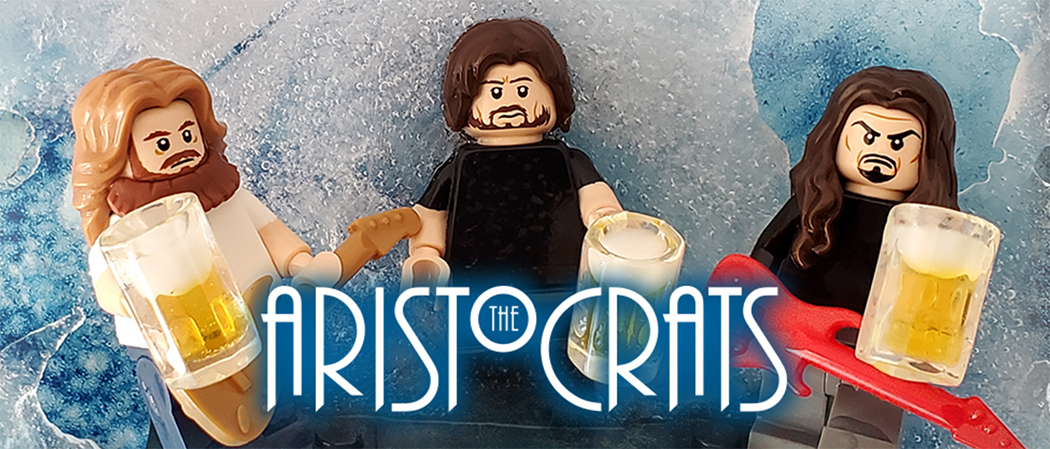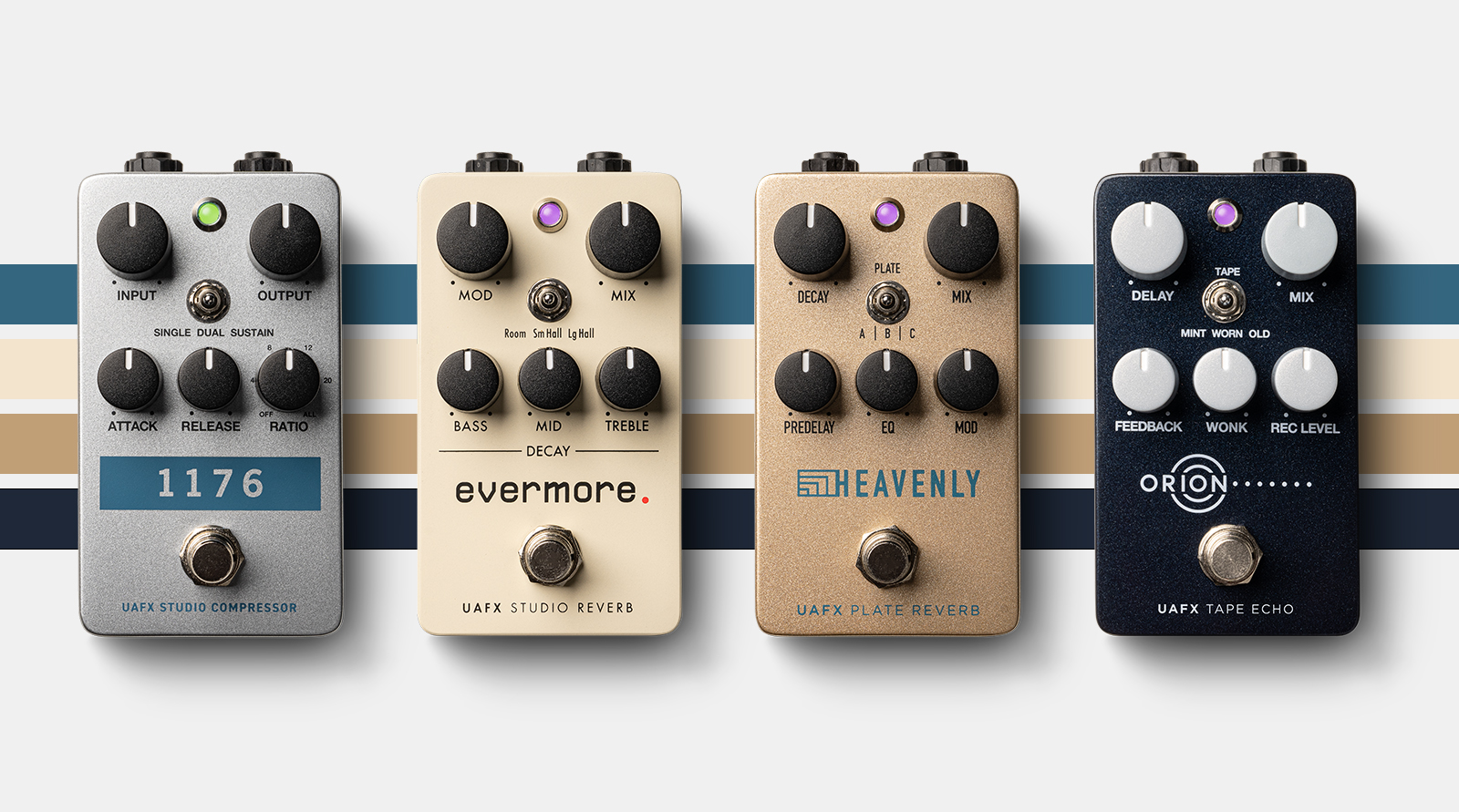 Akai and Ableton have paired up to make the first completely integrated controller for Ableton Live, and what a great controller it is. With over forty buttons, nine faders, and sixteen knobs that can control over 96 functions, the amount of flexibility presented here is staggering.
Akai and Ableton have paired up to make the first completely integrated controller for Ableton Live, and what a great controller it is. With over forty buttons, nine faders, and sixteen knobs that can control over 96 functions, the amount of flexibility presented here is staggering.
Plus, not only can this controller control Ableton Live, but because all the knobs, buttons and faders send Control Change data, it can also be used as a MIDI controller for your other gear and software. This will certainly become a permanent fixture in at least one of our studios.
| Category | Value | Rating |
| Features | 20% | |
| Usability | 25% | |
| Sound | 25% | n/a |
| Documentation & Support | 10% | |
| Price | 20% | |
|
|
||
| OVERALL RATING = 3.7, which earns it a WIHO Award! 3.6 stars or better: Outstanding, WIHO Award 3 stars or better: Worth considering 2 stars or better: Suited to specific needs 1 star or less: Not recommended |
||
In the APC40, Akai has released a solid piece of gear that not only feels great, but really works seamlessly with Live. The knobs are big and easy to grab, with LEDs ringing them to give you instant visual feedback for whatever parameter you’re controlling, and the faders are a good size for large fingers, too. Even on stage in a live situation, they are right there to be grabbed and pushed around, and with such an immense array of buttons, just about every aspect of Live can be controlled quickly and easily.
Features
A Brief History
Ever since its release, Live has been marketed as the ultimate performance tool for people who want to go beyond just hitting play on a sequencer and then playing instruments along with it. It has become the go-to software for a number of high profile DJs who strive to take their sets beyond what vinyl allows — to break down songs into elements, and play what could be best described as a remix set.
Because of Live’s easy-to-use interface, and the sheer power that it provides for twisting sounds on the fly, it gives users the ability to remix as they go. Then only real problem has been what to use to control it.
This has created a new subculture of people who may or may not have ever touched a turntable mixing set, and they have call themselves “controllerists” (after the term “turntable-ist” for the more traditional vinyl wizards). Controllerists are an elite group of musicians [Editor’s Note: Can we debate the right to call DJs musicians?] who, not satisfied with the hardware control options, have taken matters into their own hands by modifying current hardware to suit their needs, or, by creating completely new MIDI controllers from scratch, giving them control over all the parameters they need to remix music on stage. To learn more about one of the most well-known controllerists, check out Moldover.
Of course, this gives rise to some very cool boutique gear, but there are a few disadvantages for those of us who don’t have the engineering skills to build our own MIDI controllers: flexibility, price, and integration. First, custom-made MIDI controllers are usually built with a specific goal in mind, for one person’s style of playing. So a certain controller may be perfect for the person who made it, but may not work at all for someone else. This is a situation that arises a lot more with Live than with other sequencers because of its flexibility — it seems that everyone uses Live slightly differently, even to get the same results.
Second, while the gear is really cool, it is typically quite expensive. Most of the people making their controllers are musicians first, and hardware makers second. As you can probably imagine, it is not easy to make a MIDI controller. A friend of ours says he spent about three years designing and building one controller that has about 10 (very well-placed) knobs and switches on it. This would not make for cheap gear.
Third (and maybe most important), integration with Live is a one-way street. These controllers can tell Live what to do, but they can’t see what Live is doing. And they really need to.
As Live has grown in popularity, companies have started making gear designed to work with it. Most are based around a mixer layout and address the issue of mix control for effects and cross-fading. But very few controllers address Live’s unique ability to launch clips on the fly, which is why it is such a great performance tool.
Those of us who use Live were all wondering when it would happen: when would Ableton release a controller that addresses the needs of the average Live user, but keeps it within a price-point that most people can manage?

A Great Partnership
To make the APC40 a reality, Ableton joined forces with Akai, renowned for making some of the best controllers on the market. Integration between Live and the APC40 is so close that it’s sometimes a bit confusing to think about who actually makes the APC40. The answer is Akai, and although we talk a lot about Ableton in this review, it should be made clear that the APC40 is built by Akai, and it is an Akai product. Yes, Ableton had a big hand in its creation and design, but they are just the software company in this story, err… review.
Akai built the hardware, but as mentioned above, the lines are blurred with the APC40 because although it is a hardware piece, it was designed in parternship with Ableton so that it would have complete integration with Live. This is important to note, because this integration is the main point which makes it so unique.
One look at the APC40 and you’ll immediately recognize that this product was made for Live: not just the large array of buttons, but close inspection will reveal Ableton-specific knob labels. But what you don’t see by looking at the APC40 itself is the real integration in the way that the controller talks to the software.
Clip Control
 When you open up Live with the APC40 connected, immediately things are a bit different. This is noticed by the red box that surrounds a section of clips. This red box shows you which clips are being controlled by the buttons on the face of the APC40. The buttons on the hardware show you which slots actually have clips in them, and what those clips are doing by lighting up. Green means a clip is playing, orange means a clip is present, but not playing, and red means a clip is recording. In this way, by just glancing at the APC40, it is immediately apparent what is going on. Press an orange button to play a clip (it will turn green), or if the track is record-enabled, it will begin recording (and turn red). There is a row of stop buttons, to stop playing the clips on the track, and on the right there is a column of scene launch buttons, to play an entire scene.
When you open up Live with the APC40 connected, immediately things are a bit different. This is noticed by the red box that surrounds a section of clips. This red box shows you which clips are being controlled by the buttons on the face of the APC40. The buttons on the hardware show you which slots actually have clips in them, and what those clips are doing by lighting up. Green means a clip is playing, orange means a clip is present, but not playing, and red means a clip is recording. In this way, by just glancing at the APC40, it is immediately apparent what is going on. Press an orange button to play a clip (it will turn green), or if the track is record-enabled, it will begin recording (and turn red). There is a row of stop buttons, to stop playing the clips on the track, and on the right there is a column of scene launch buttons, to play an entire scene.
You can move the red box up and down by using the Bank Select buttons on the right (hold Shift to skip five down or eight to the right/left). Also, when you hold the Shift button, the Clip Launch buttons become a session overview, which allows you to skip easily to different clip locations. With a little practice, this becomes very quick and intuitive.
There is also a row of control buttons just above the faders. These allow you to mute, solo (or cue), and record-enable tracks on the fly.
So, immediately we see how the APC40 allows complete control over the clips in Live, which is something that other controllers on the market don’t do natively. If you need control over clips, there is nothing as comprehensive (or easy) as the APC40.

Mix Control
But what about controlling the mix parameters and effects? That’s where all the knobs and faders come in.
First of all, the faders obviously control the volume of each track. As mentioned above, the faders are nice and solid. Big enough to grab and move in a live situation, and resistant, without being too much so. Just like with the clip launch buttons, the faders can be moved left or right to control different tracks by using the Bank Select button.
Panning and sends are controlled with eight knobs in the upper right corner. Four buttons light up to let you know if the knobs are showing panning, or sends A, B, or C. One thing worth mentioning here is that all Akai knobs these days are 360 degree potentiometers. Current settings are indicated with LED lights around each knob. This means that when you switch between panning and the sends, or when you switch to different tracks with the Bank Select button, the LEDs immediately change to reflect the current settings.
For editing effects and instruments there is a row of buttons called Track Selection. These let you select which track’s plug-ins you will edit with the “Device Control” knobs on the lower right. These knobs are interesting in that they control certain pre-assigned parameters in the native Live devices, and user-assignable parameters in third-party plug-ins. So, depending on which device you have selected (you can switch between devices using the arrow keys), the knobs will represent different edit points. Once again, handy LEDs illuminate to show what your settings are for that device.
Usability
The Overall Build
When we first removed the APC40 from the box, we were immediately surprised by how thin it is. We regularly use an Akai MPD24, and that controller is thick, much like an MPC music production center. We had expected the APC40 to mimick that build as well, but as it turns out, Akai didn’t need to make it so thick. And although it is thin, the APC40 does not feel flimsy at all. The plastic felt extremely sturdy, and all the buttons and knobs felt like they could take a heavy pounding for a long time.
For DJs who plan on putting a lot of wear-and-tear on the cross-fader, it is important to note that the cross-fader is user-replaceable. There are a couple of screws on the bottom of the unit, which can easily be removed for the cross-fader to be switched out. What a fantastic attention to detail!
In the Studio/In the Field
We tested the APC40 in both the studio and in the field — our field being a club. [Editor’s Note: Next time we’re going to have Tony test controllers in a cornfield.]
First of all, as mentioned above, because of the size of the knobs and faders, it is easy to tweak this thing in all situations. Not to belabor the point, but for people with big hands, this is very important!
Also, because of all the illuninated pads and LEDs surrounding the knobs, it is extremely easy to see what you’re doing at all times. The few unlit buttons that do exist are laid out in such a way that it’s pretty easy to memorize where they are after just a few hours, so the lack of lights on them is a non-issue.
Keyboard Players and DJs
With the addition of the cross-fader, Akai has made sure that this is also aimed at DJ users as well. Plus, because all the controllers send standard MIDI CC data, the APC40 is not just restricted to use with Live. Any program that accepts the MIDI CC protocol (which is most all of them) can be easily controlled by the APC40, and if the program uses “MIDI Learn” then all you have to do is click on the parameter you want to control and twist a knob, push a button, or slide a fader.
Inside Ableton Live, the cross-fader parameter can be set to different cross-fade curves, which means more flexibility for different types of users.
For keyboard players, this is an excellent addition to a live setup, as it makes life super easy for sequencing on the fly. Because of the lighted pads that show you where the audio clips are, you don’t need to keep looking at the computer to rearrange the sequence. You just need to make sure the correct group of clips is being controlled (the red box mentioned earlier shows this), and then follow the lights!
Plus, because of all the knobs and faders for sound control, soft-synths galore can be tweaked quickly. We can easily envision many scenarios that include a keyboard controller and a stand for the APC40 to sit right in front of it for easy access.
One more point that should be mentioned for keyboard players: there are two footswitch inputs on the back of the unit, which means that you do have some “hands-free” control here! Great news for all the keyboard shredders out there who still need to tweak something while their hands are occupied.

Documentation and Product Support
Because the APC40 is laid out and labeled extremely well, we were up and playing around for a while before we even touched the manual.
That said, the manual well written and explained everything in good detail. There are also plenty of resources from the software side of things in Ableton Live 8.
Akai also has a great tip section on their website that deals with the APC40.
Price
The APC40 (MSRP $599.99) sells for under $400. Considering its integration with Live, and the sheer number of knobs, buttons, and faders it has, this is a great price. There are other devices on the market that can achieve some similar results, but none do so straight out of the box, which means they all require a certain amount of programming prowess.
Other Comments
Going Further
There is already plenty of user-generated content on the Web for taking the APC40 to another level. Because of the great integration between the APC40 and Live, people have already begun looking inside to figure out what makes it tick. Check out a few of these pages if you want to see what the APC40 is potentially capable of:
From Akai: http://www.akaipro.com/tipsjun09
From Create Digital Music: http://createdigitalmusic.com/2009/06/15/apc40-hacking-superguide-monome-emulator-midi-tricks-and-the-handshake
From Synthtopia: http://www.synthtopia.com/content/2009/06/15/akai-apc40-hacking-guide
Contact Information
Akai Professional
www.akaipro.com
| Evaluation Short-List |
|

